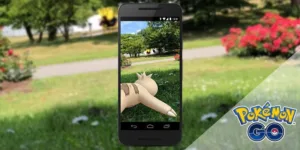Pokémon Go and Snapchat have been the epitome of AR for the masses, though many users are unaware of the AR technology and further use-cases available to them.
Strategy Analytics recently found that familiar sources, including Star Wars and Google, are driving these AR experiences.
Image: Twitter (@PokemonGoApp)
The firm’s findings suggest that in order to drive awareness of AR, not only will solid use-cases need to be developed to inform and entertain users but most importantly, developed from within existing apps to help drive awareness and usage. Key report findings include:
- Users seek better experiences, not specifically AR, so focus needs to be on actual output and not just on AR technology.
- Widely-recognised content branding offers a range of discoverability options while enhancing the experience across a multitude of use-cases and making the AR experiences more compelling.
- Using varying HMI to include auditory sensory and wearable devices will help to complement the user experience and make it more immersive.
Associate director and report author Christopher Dodge commented:
“F
amiliarity is driving adoption and use of AR with brands such as Pokémon Go, Star Wars, Google and Snapchat but it’s important to note that it’s the brand that’s drawing users to the use-case, not the use of AR. AR is the technology that is making these use-cases more useful, usable and compelling but consumers don’t really give much thought to the background technologies the apps they use contain — they just want the best experience.
Using AR to develop quicker and more efficient access to information or entertainment will enhance usability as well as eliminate worries such as battery consumption. Leveraging familiarity in the first instance will undoubtedly drive acceptance and understanding”.
 UXIP’s Chris Schreiner said:
UXIP’s Chris Schreiner said:
“However, developing more use-cases for AR is challenging, as will be its discovery if not managed properly — many companies are developing their AR applications separately to their flagship apps. This will only work to reduce awareness of AR and hinder its adoption and use as a whole. AR must be applied within an existing app to be found in the first instance”.

